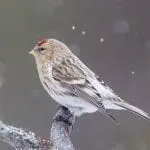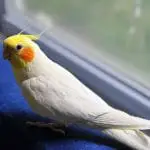Scientific Facts
| Common Name | Blue-eyed Cockatoo |
| Scientific Name | Cacatua ophthalmic |
| Origin | Papua New Guinea in the western Pacific ocean and in the New Ireland and New Britain |
| Habitat | They are more active in the forest than in gardens forests. They build their nest in very large trees at about an average height of 41 m (135 ft). |
| Diet | different kinds of nuts, seeds, berries, and fresh fruits. They also feed on insects with larvae. |
| Size and Weight | Size: 18-20 inches (45-50cm) Weight of 18 – 20 oz (500-570 grams). |
| Life Span | Captivity: 40 years Wild: 50-60 years |
Physical Description
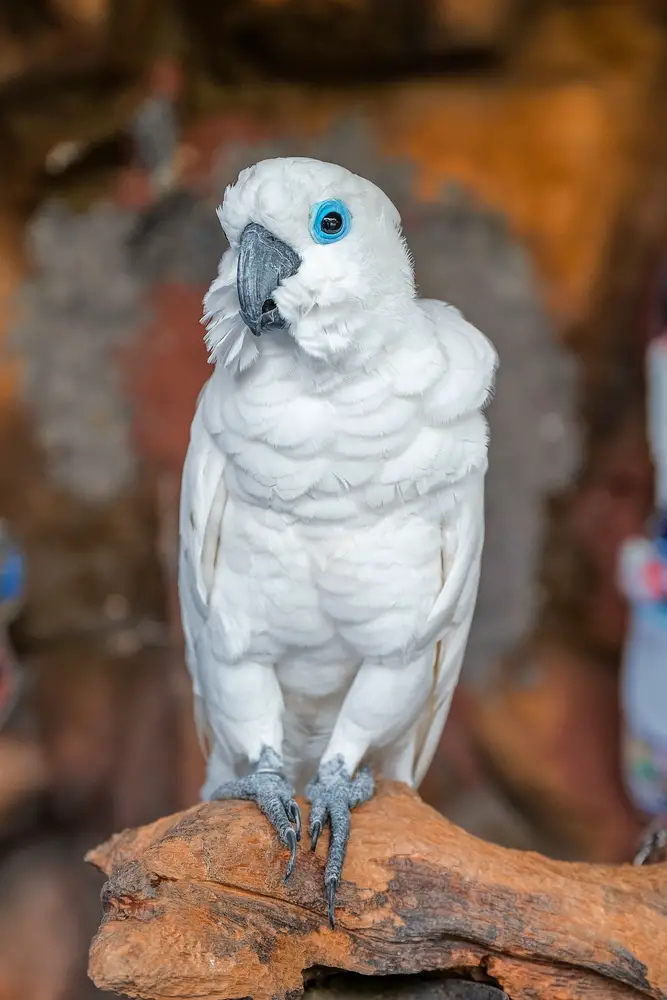
The blue-eyed cockatoo is a large cockatoo that is characterized by its striking yellow and white crest, dark grey legs, a black beak, and a light blue rim around each eye that is of featherless skin where its name came from. Both males and females almost have the same physical attributes, but the iris of the males is dark brown while the female has reddish-brown iris, but it is not an accurate way to distinguish them. They have a zygodactyl grey foot where their first and fourth toes are directed from the back part while the second and third forward are positioned forward, allowing them to hold things such as food up until their beak. Their outstanding color is mostly white
Where it is Seen?

They are commonly seen in Papua New Guinea in the western Pacific Ocean and in New Ireland and New Britain.
Habitat
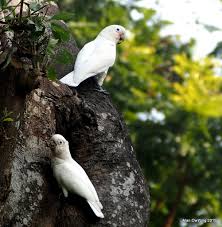
It is quite difficult to see them in captivity because of their flying patterns. They are more active in the forest than in gardens forests. They build their nests in very large trees at about an average height of 41 m (135 ft).
Behavior and Temperament

They are considered as one of the friendliest and playful cockatoo species. They are known to be a great mimic. They are both noisy in the wild and in captivity. Like other cockatoos, they require a high amount of time and attention. There is a possibility that they hurt themselves by feather plucking and other types of self-mutilation when they feel neglected.
Breeding and Reproduction

The blue-eyed cockatoo is sexually mature as they reach 4 years old. They mate with one cockatoo only, and they tend to form tight family bonds. They prefer building their nest in high trees, and they have the ability to lay 2 eggs. Both males and females had the ability to incubate it. After 28-30 days of incubation, the eggs will hatch, and both parents will feed them until 14 to 16 weeks.
Diet
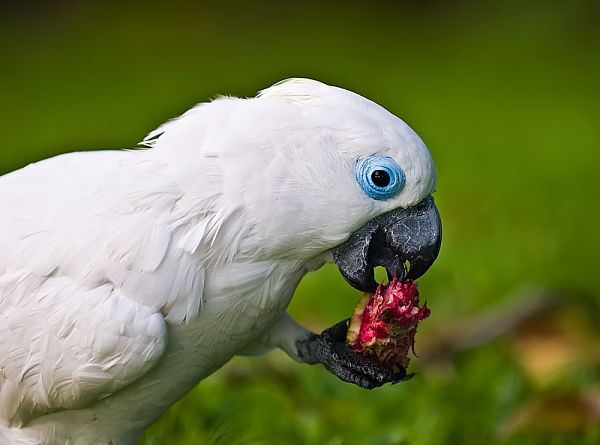
Their diet consists of different kinds of nuts, seeds, berries, and fresh fruits. They also feed on insects with larvae.
Size and Weight
The blue-eyed cockatoo can reach up to 18-20 inches (45-50cm) with a weight of 18 – 20 oz (500-570 grams).
Life Span
The Blue-Eyed Cockatoo had an average lifespan of about 40 years in captivity, but it is a surprise that experts were able to monitor a blue-eyed cockatoo that reached about 50 to 60 years in the wild. Most bird species tend to have a longer lifespan in captivity than in the wild.
Common Disease/Illnesses
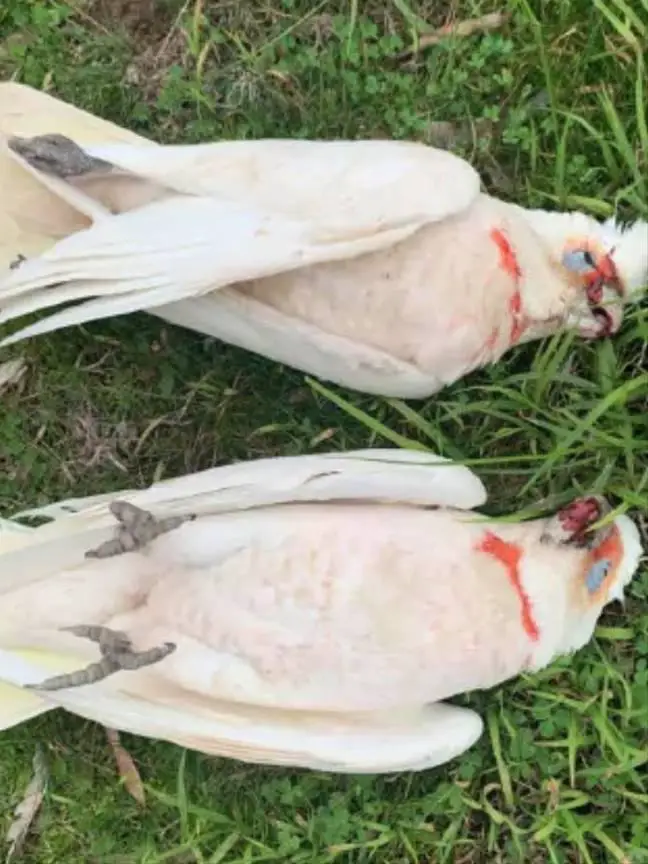
1) Feather Picking and Self-mutilation
Feather Picking and self-mutilation is a behavioral problem shown by your cockatoo, especially when they are bored, stressed, and frustrated. These are the traits that they show if they are lonely, these types of birds are not used to living alone that is why to avoid this; you may need to take them in pairs or sacrifice your time at least 2 hours a day to play or train them. It would also be useful if you will place their cage in a place where they see people to a male; they feel that they are still in a flock.
2) Psittacine beak and feather disease (PBFD)
When your bird suffers from this disease, their feathers change in color, and it is dropping. While its beaks are very fragile that it may break off hard food is given to them, and usually, they already have a distorted shape. Expect that your bird will not be cured through the use of an antibiotic or any medications since their immune system has already been attacked. The best way to deal with this disease is to make sure to give them healthy foods enriched with nutrients and always make their environment hygienic. This disease is common in the wild, so it is important that as you acquire a cockatoo from a pet shop or pet collector, you may still need to let your veterinarian screen them for PBFD.
3) Food poisoning/Ingesting toxins
Cockatoos are prone to food poisoning, whether they are in the wild or in captivity. In captivity, you must be very cautious with the variety of food you are given to them. Avoid giving them peanuts, grapes, avocados, alcohol, and other caffeinated products. If your bird consumed these toxic, expect that they ‘ll have dizziness, liver disease, kidney problems, and heart failure. The different household cleaning chemicals also irritate them quickly, so make sure not to use those near the bird.
4) Obesity and Lipomas
Obesity and overweight for cockatoos is a no-no because it can trigger other diseases such as diabetes and heart problems. To avoid this problem, make sure not to overfeed them. Make their feeding schedule at the same time every day. Aside from overfeeding, the lack of exercise is also another cause. There is a high possibility that your cockatoo will develop benign fatty tumors known as lipomas if they are obese, and this is solved through surgery only that can pose a danger to the cockatoo.
5) Bumblefoot
This is lameness and swelling of the cockatoo’s feet, and usually, it is accompanied by some wounds or lesions on the skin. If your bird suffers from bumblefoot, they will have difficulty in doing some activities, such as standing on the ground or on the porch. Due to lesions, they will also have a hard time grasping their food. The lesions on their skin can be a breeding ground for bacterial infection, so make sure to instill cleanliness in their cage. They usually suffer bumblefoot due to nutritional deficiencies such as calcium and Vitamin A.
Preventing Illnesses
The different illnesses/diseases that are common to Blue-eyed cockatoo are both uncontrollable and controllable. If the reason for the decline of their health is due to some controllable reasons such as stress, boredom, unhygienic environment, improper way of handling, you must change your ways and be a more responsible cockatoo owner. Make sure that their basic needs are always met. Don’t hesitate to seek professional guidance if you see that there is something wrong.
Captive Breeding
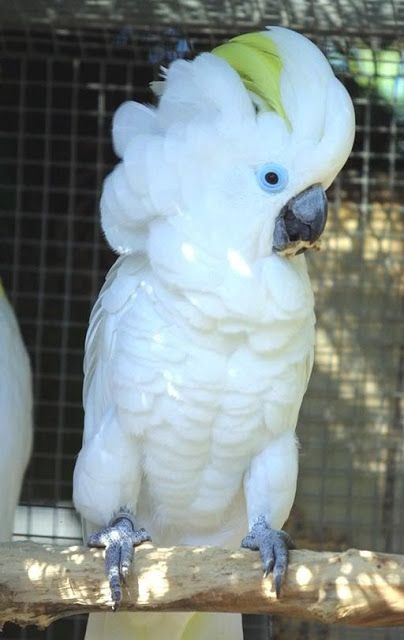
The Blue-eyed Cockatoo is described as a demanding pet in captivity, but they are considered as the living and friendliest ones. They require high interaction, so before deciding to take them in captivity, make sure that you have enough time to spend with them at least 2-3 hours every day. They are quite sensitive to this, lack of interaction may trigger boredom and stress that brings out their negative attributes.
Availability-Where to Get One
The Blue-eyed cockatoo is not that popular cockatoo species in captivity because they are not commonly available in some pet stores. Since their population is near extinction, it is no longer allowed to get them in captivity. There are some bird owners that breed Blue-eyed cockatoo; that is why it is advisable to search for these pet owners so that you have a chance to acquire it in captivity.
How to Care Parrot as a Pet?
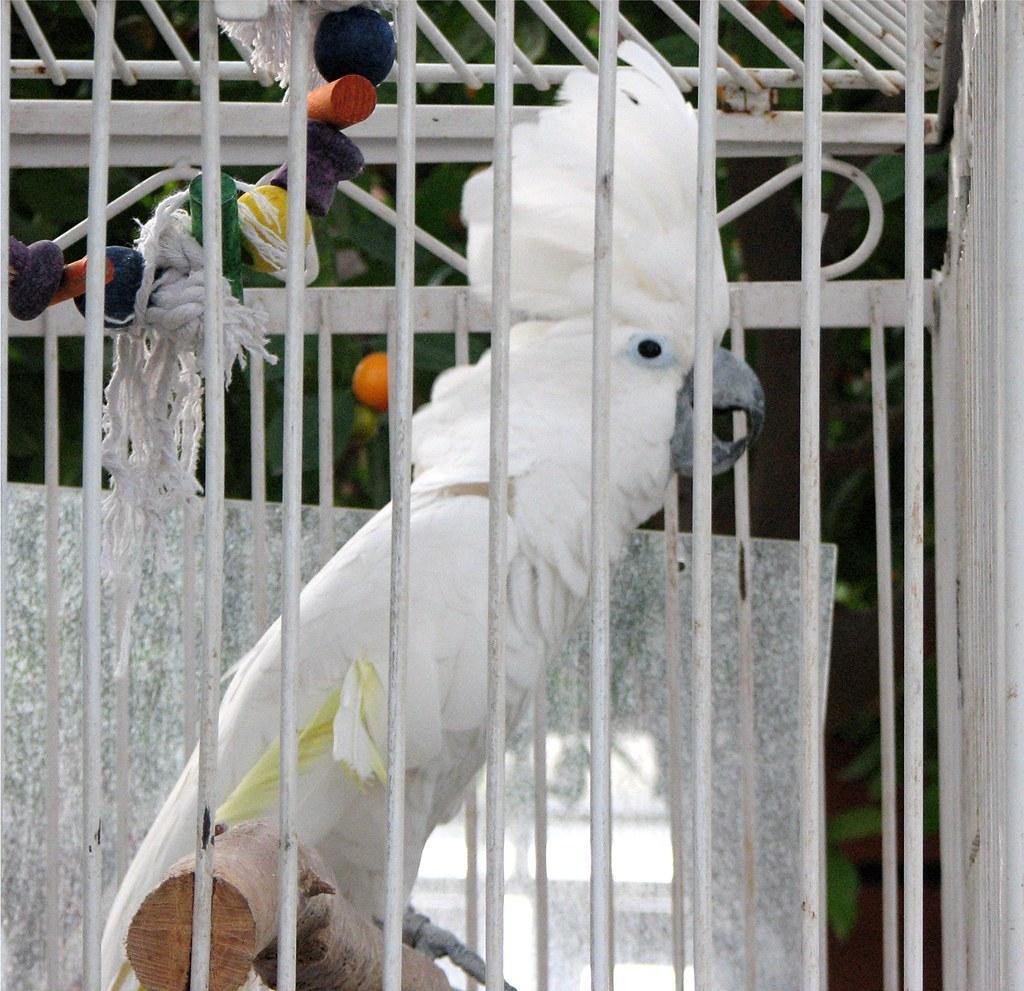
1) Housing
It is always advisable to opt for larger cages if you decided to take this bird into captivity with at least 102 x 76 cm (40 x 30 inches). They are an active bird species; that is why a spacious cage where they can play around is important. The cage should be placed in a room with natural lighting since they want to get up with the sun; it can either be near the window or on your balcony. To give them the feeling that they are still part of the flock, make sure that their place is where they can see a lot of people.
2) Accessories
There should be a lot of perches spaces throughout the cage where they can move around hopping. The ideal would be at least 4-5 perches in a large cage. They would usually sleep near the top part of the cage, so place a soft perch in it.
Include lots of perches spaced throughout the cage. Put these at various heights so your bird can hop around. Make sure to include at least 4-5. They can all be the same type of perch, except pick a soft perch for the one nearest the top of the cage. If they stay alone, they need a lot of toys to keep them entertained.
3) Feeding
In captivity, they are usually given pellet that is enriched with nutrients that they needed. The amount of food that you will be giving your bird should depend on their size. Ideal food preparation for them should be at least 75% consist of pellets, while 20% consists of fresh fruits, legumes, and grains. They are voracious eaters, so discover what kind of combination is their favorite. Giving them a variety of foods will ensure that they are getting sufficient nutrients daily.
You can choose from different fruits such as apples, peaches, bananas. The different vegetables such as squash, peas, carrots, cabbage, tomatoes, cucumber, etc. You can also give them cooked food such as brown rice, pasta, navy beans, barley, oats, and kidney beans. Make sure not to give them too many citrus foods such as kiwi, broccoli, and strawberries along with pelleted foods because when combined, it absorbs high iron that leads to other deficiencies. They will have an appetite to eat more if someone is around them.
4) Grooming
The blue-eyed cockatoo easily gets irritated; that is why it is important to do grooming. You need to bathe or shower them at least once a week. Most species of cockatoos especially the gang-gang cockatoos are fond of water, sometimes they even dive into the bowl of their drinking water that is why it is important to give them a water bowl that only has a sufficient water for drinking because they can drown for only a couple of inches deep and that they are not good at swimming.
A proper way for you to bathe them is through the use of a showerhead or a can with small holes. To know if your bird is comfortable with water, just sprinkle them a little bit first, if they show some signs of aggressiveness, it means that they do not like to take a bath so don’t force it. Apart from bathing them, you also need to trim their claws and nails. Some pet owners are not comfortable doing it, so you may visit your veterinarian to groom them safely and correctly.
Conservation Status
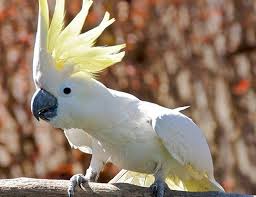
Blue-eyed cockatoo is initially classified as vulnerable by the IUCN; it means that their population is slowly decreasing in the wild. Some of the reasons why there is a decline in their population are because of the destruction of their habitat for industrial use, illegal hunting and trading, and the declination of their natural habitat due to climate change.
FAQ Section
Are Blue-eyed cockatoo color blind?
These bird species are not color blind; studies show that they even have a better vision than humans. They have a total of four light-sensitive pigments found on their retina, while humans only have three pigments. Light is invisible to humans, but for these birds, it is one of the colors.
What smell do Blue-eyed cockatoo hate?
They hate the smell of citronella and peppermint oil. They get irritated easily when they smell it, so in captivity, make sure not to use these essentials near them.
Where does Blue-eyed cockatoo go when it’s raining?
Their feathers act as their shield when it’s raining to keep their bodies warm. However, if it is raining heavily, they seek shelter from trees or plant’s bushes motionless to conserve their energy to fight the cold.
How can you tell if a Blue-eyed cockatoo is stressed?
They create noise; they raise their wings away from their body, and pants are some of the manifestations if they are stressed. If this happens, go near them because there is a possibility that they are just seeking attention.
How do I know if my Blue-eyed cockatoo is happy?
A sign that your bird is happy, relaxed, and excited if their crest is flat.

